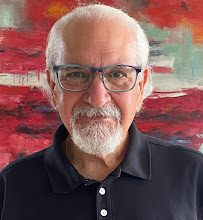Retrospective: Silicon Valley's Beginnings
Down Silicon Valley
Feb. 20, 1978
TIME Magazine
Some people still call it Santa Clara County, Calif., but more and more it is referred to as Silicon Valley, the place the miracle-chip industry calls home. Packed into a 10-mile by 25-mile wedge along the southwestern shore of San Francisco Bay are hundreds of the nation's high-technology firms, many of them involved in manufacturing silicon chips, related semiconductor devices and microcomputer-controlled products. At rush hour, cars inch along Highway 101, the valley's main drag, and peel off into the parking lots of well-manicured, one-and two-story buildings with names like Siliconix Inc., Synertek, Advanced Micro Devices, Signetica, and Intel Corp. Enveloped in their mystifying jargon of RAMS and ROMS and bits and bytes, the technicians who work in these factories would seem an alien breed to most Americans. Reports TIME Correspondent John Quirt: "Advances in chip making have come so fast that recent engineering graduates are almost the only ones around who fully understand the technology. In one facility I visited, technicians looked as if they had come straight from a college classroom — and many of them had."
For all the fierce com petition, business in the Valley of the Chips re mains something of a family affair. The corporate Abraham of the industry was Shockley Transistor Corp., founded in Palo Alto in 1956 by William Shockley, co-inventor of the transistor and a Nobel laureate.
A year later, eight of Shockley's ablest collaborators quit, and with backing from Fairchild Camera and Instrument Corp. founded Fairchild Semiconductor. The new firm prospered and eventually began to spawn its own host of upstart competitors as its technicians, one after another, decided to go into business for themselves.
As a result, the valley is speckled with more than 40 firms that have roots tracing to Fairchild. The Wunderkind of them all is Intel Corp., founded in 1968 by Robert Noyce and Gordon Moore, both from Fairchild Semiconductor. Starting with twelve workers, Intel has become the world's largest manufacturer of miracle chips, accounting for 26% of the market and employing 8,000 people in ten plants from California to Malaysia.
To stay competitive, companies in the valley are scrambling to snatch away their competitors' best engineers and designers. Says President Jerry Sanders of Advanced Micro Devices: "All a guy has to do here if he wants to change jobs is drive down the same street in the morning and turn in a different driveway." As billion-dollar chip makers like Texas Instruments and Motorola, which are based elsewhere, throw more of their weight into the fray, the smaller companies of the valley may ultimately be forced either to merge or sell out to larger firms. That could endanger the vitality of the valley. Explains Sanders: "This industry has amoeba-like qualities. It doesn't combine very well. It splits." That characteristic is the essence of competition, and no industry has better shown its benefits than the denizens of Silicon Valley.


0 Comments:
Post a Comment
<< Home